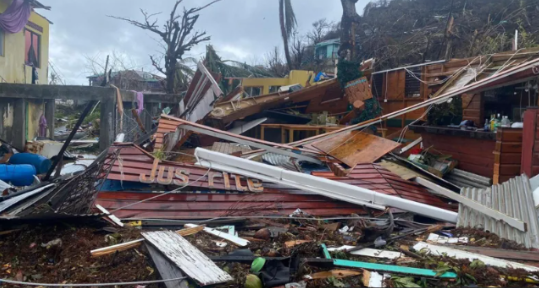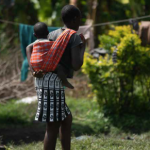At least two people have died as Hurricane Beryl hit southeast Texas, causing power outages for more than two million people while bringing heavy rain and strong wind gusts. When Beryl initially struck Texas on Monday morning, it made landfall as a category one hurricane but has since been downgraded to a tropical storm.
Officials have warned of destructive winds, up to 15 inches (38 cm) of rain, and “life-threatening” storm surges. More than 1,000 flights at Houston’s largest airport have been cancelled. The state governor’s office has repeatedly urged residents not to underestimate the storm, which caused at least 10 deaths in the Caribbean days earlier.
In Texas, a 53-year-old man died after powerful winds downed power lines and knocked a tree onto his home in Harris County, causing his roof to collapse. In the same county, which includes parts of Houston, a 74-year-old woman was also reported dead after a tree crashed through the roof of her home. The police were notified by the woman’s granddaughter.
On Monday, police in a Houston suburb had already begun conducting water rescues as the hurricane continued to impact the state. According to US forecaster AccuWeather, hurricanes of this kind making landfall in Texas in July are somewhat rare.
Sustained wind speeds in the Houston area reached 75 mph (120 km/h) with wind gusts reaching 87 mph (140 km/h). Torrential rainfall and flash flooding occurred in areas where inches of rain fell in just a few hours. The storm is expected to lose strength as it gradually tracks north-northeast, but flash flooding and heavy rain remain a risk.
More than 2.7 million customers in Texas are without power as of Monday afternoon, according to poweroutage.us. At Bush Intercontinental Airport, Houston’s largest airport, 1,097 flights were cancelled, according to flightaware.com.
As the storm moved past Houston, tornado warnings were issued for dozens of other Texas counties in its path, including a few in Louisiana.
“Take cover now!” the National Weather Service warned in all caps in its weather update around 13:00 CDT (19:00 BST) for residents in Louisiana’s Northeastern Beauregard Parish.
“Move to an interior room on the lowest floor of a sturdy building. Avoid windows.”
Earlier, the city of Galveston, south-east of Houston, issued a voluntary evacuation order for some areas.
Storm surges in the Galveston area were predicted to reach 4-6ft above ground.
In Surfside Beach, police posted a photo of flood waters rising above the lower part of a truck’s door, feet above the ground.
The director of the US National Hurricane Center, Michael Brennan, has warned those living in Beryl’s path to find a safe place to be through Monday “as hazardous conditions will persist even after the centre of Beryl moves through”.
“There’s a very considerable risk of flash flooding across the Texas Gulf Coast, eastern Texas, ArkaTex [Arkansas-Texas] region.
“Do not ignore this very serious storm,” urged Acting Governor Dan Patrick.
The ports of Corpus Christi, Houston, Galveston, Freeport, and Texas City have all closed, resulting in a temporary halt to exports. All vessel movement and cargo operations have been restricted. Refugio County, north of Galveston, issued a mandatory evacuation on Saturday, citing limited emergency services, July 4th holiday traffic, and weakened infrastructure from Hurricane Harvey in 2017 as reasons.
Nueces County also ordered the mandatory evacuation of visitors and strongly encouraged locals to leave. More than 2,000 emergency responders, including members of the Texas National Guard, have been prepared to deal with Beryl’s aftermath, as announced by Mr. Patrick.
Beryl is expected to move east across America’s central states, including Mississippi, later in the week, likely bypassing central and west Texas, which are currently experiencing moderate to severe drought conditions.
Hurricane Beryl has been an unprecedented storm, becoming the earliest Category Five hurricane ever recorded at one stage. It has already caused significant devastation across the Caribbean, severely impacting islands such as St. Vincent and the Grenadines, Mayreau and Union, and Grenada. The storm was also one of the most powerful to ever hit Jamaica, leaving hundreds of thousands of people without power.
Beryl brought heavy rain to the tourist hotspots of Cancún and Tulum in southern Mexico, causing power outages and downing trees, though no major damage was reported. While attributing specific storms to climate change is complex, exceptionally high sea surface temperatures are seen as a key factor in Hurricane Beryl’s intensity.
It is the first hurricane of the 2024 Atlantic season, but the US National Oceanic and Atmospheric Administration has warned that the North Atlantic could see as many as seven major hurricanes this year, up from an average of three per season.



